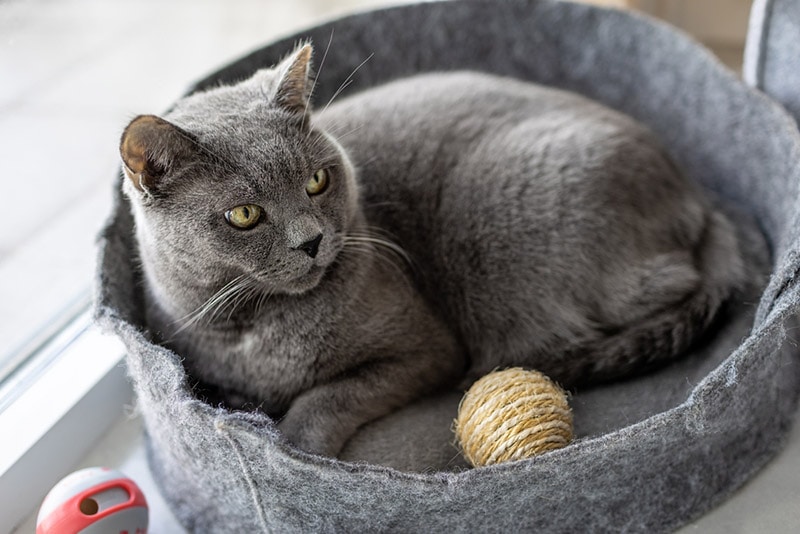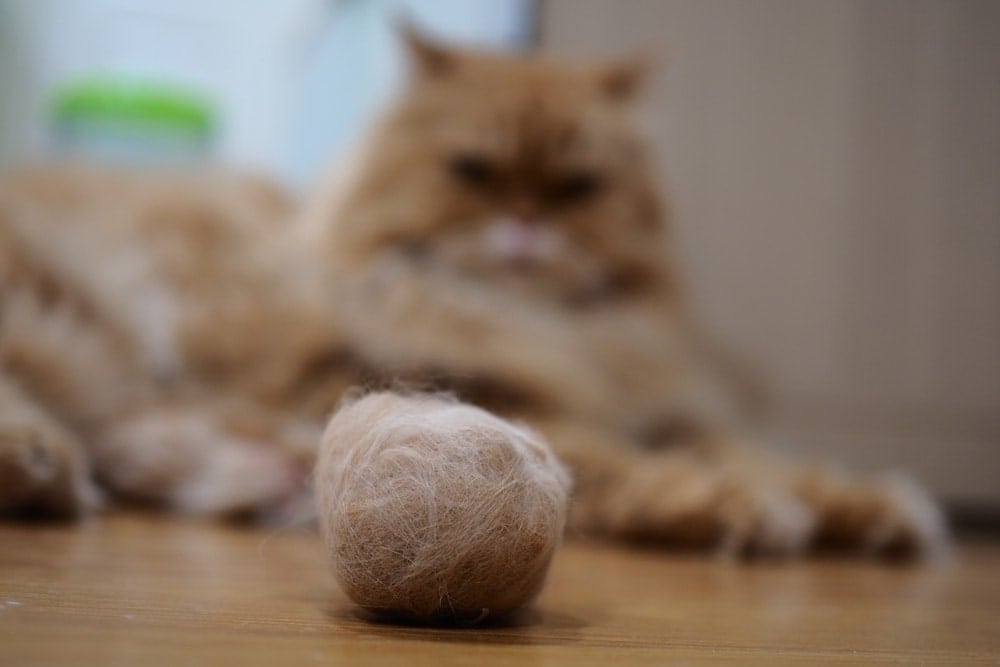Cat Brain vs Human Brain: The Differences & Similarities (Vet-Reviewed)

Updated on
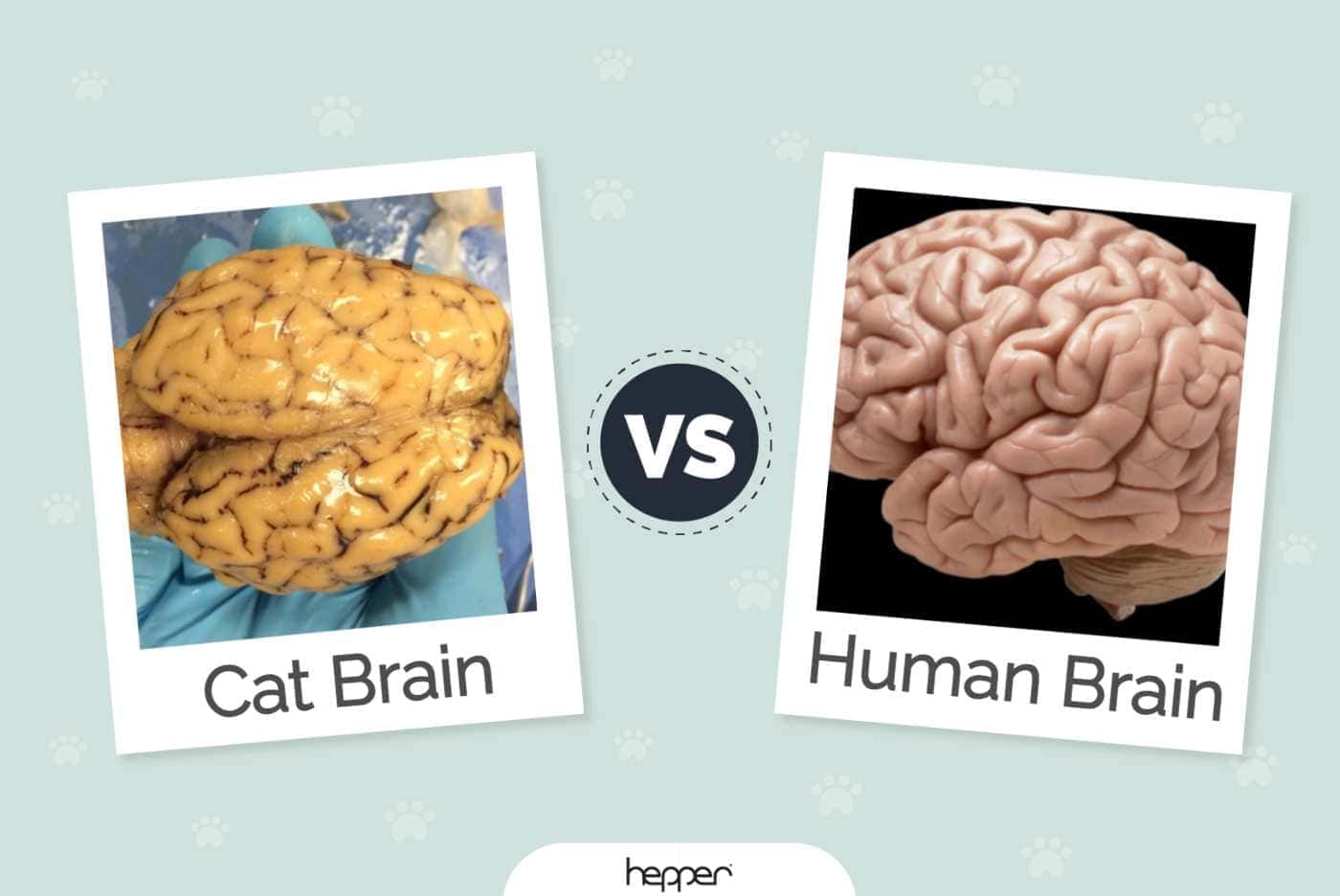
Click to Skip Ahead
Are you one of those pet parents who thinks your cat is smarter than others you’ve met? If so, you aren’t alone. A lot of cat owners notice how smart their kitties are. Yes, this includes their secret side you sometimes feel is plotting against you. You may not realize it, but your cat’s brain and your brain have a few similarities. They also have differences.
While humans may be the smarter of the two, no one should diminish our feline friend’s brainpower. Let’s take a look at the brains of humans and cats and see how they compare.
Overview of Cat Brains
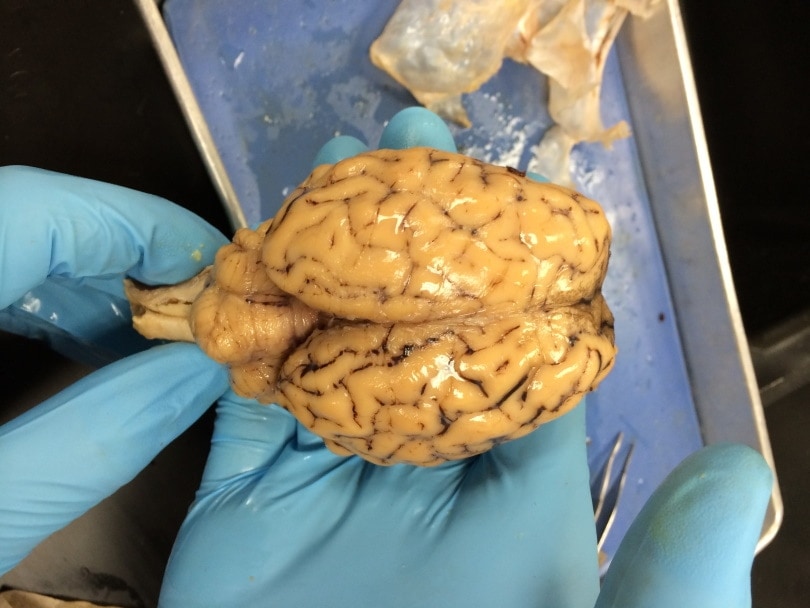
Those who aren’t familiar with cats or own one of their own may feel that cats aren’t that smart. Those people would be wrong. Animal lovers often compare dogs and cats. When it comes to intelligence, this comparison shouldn’t be done. Dogs are pack animals. They rely on others to survive. Cats can survive on their own. They hunt, groom themselves, and even have a curiosity that helps them explore the world around them. Doesn’t this show just how smart these little creatures are?
- Retains information with their long-term memory
- Have the ability to observe and learn
- Can show emotion
- Brain function has not been studied as much as dogs
Similar to the brain of any animal, a cat’s brain helps it migrate its way throughout its daily life. The brain helps control normal functions. In the animal kingdom, this is crucial. A cat needs to be on its toes, ready to pounce, at a moment’s notice. While their brains may not be as advanced as that of a human, they still function in much of the same way. The fact they are hidden behind cute, tiny heads is beside the point.
Brain Structure and Size
Yes, the brain of a cat is smaller than that of a human, but they do share similar anatomic structures. A cat’s brain has two cerebral cortices. It also features crevices or folds that work to make the brain more complex by increasing the brain’s activity. A cat’s brain is also divided into specific regions. Each region has a designated job to do. The ability to decode and process sensorial information from sight, hearing, smell, touch, and taste used for hunting, eating, and even playing are all decided in the different regions of your cat’s brain.
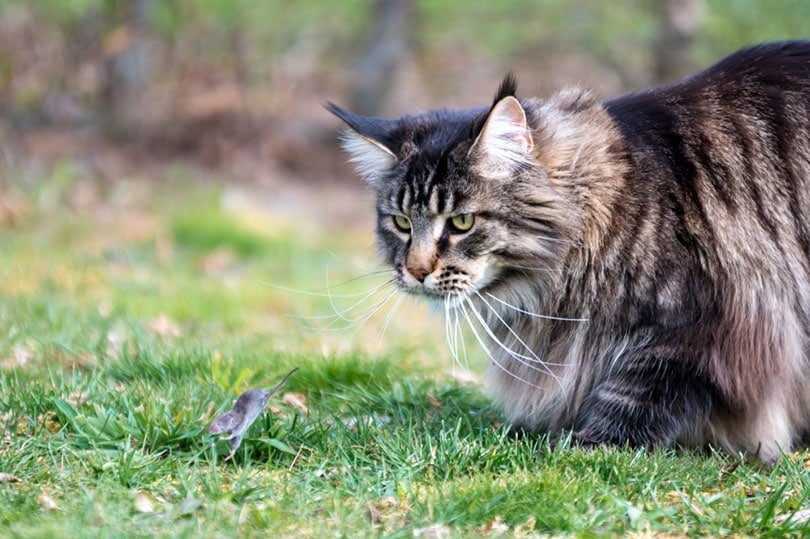
Memory
A cat’s brain is also designed to have a great memory. Your cat can remember things for years. It’s important to remember, however, that similar to the brain of a human, a cat’s memory will worsen with age. The older your cat becomes, you may notice them becoming a bit forgetful. Your cat’s short-term memory is also impressive. Cats can remember for up to 16 hours. This helps them keep up with food locations and hunting spots throughout their day.
Learning Ability
What we consider a cat’s natural curiosity is actually their brains working things out. Cats watch their owners and the world around them to learn new things. You’ll also see this studying to learn in kittens who mimic what their mothers do. With older cats, the owners are often the teachers. Cats learn to do different tasks such as opening doors or operating light switches thanks to what they see you doing.
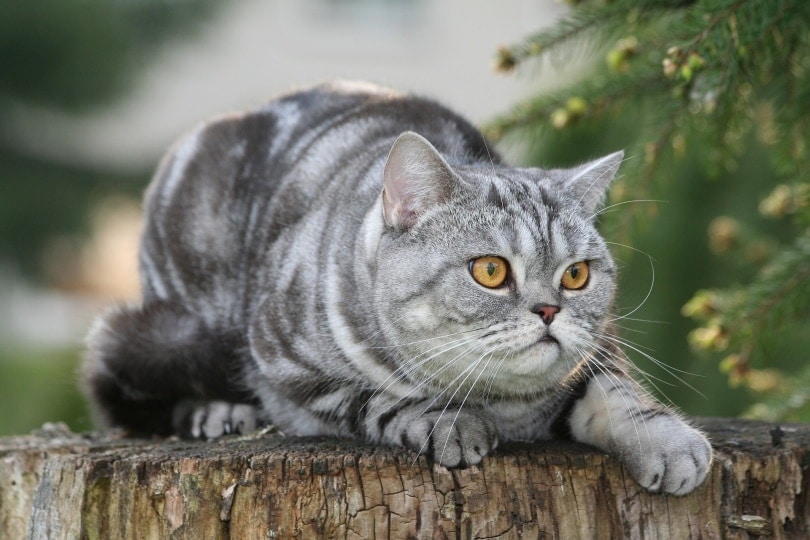
Whiskers
You may be wondering why we’re discussing whiskers when speaking about your cat’s brain. Well, it turns out, that your cat’s whiskers are sensorial and therefore provide information to your cat’s brain. Whiskers can help the cat navigate their environment by scanning the areas and specific objects around them. Whiskers aid a cat’s vision and the cat receives a lot of information about objects in the environment even before touching them with their paws, mouth, or body!
Overview of Human Brains
The human brain is one of the most complex creations in the world. While scientists are constantly studying the brain, its cortex, lobes, and functions, most humans are left simply trying to keep it sharp with daily training, learning, and development. The human brain keeps our bodies functioning properly. As the commander of the central nervous system, it is the organ that makes all others fall into line and work every second of our lives. When something is amiss inside the brain, our entire bodies may suffer.
Memories may be lost, systems may shut down, motility, thinking, and communication can be compromised, and our emotions may run away with us. This is why understanding the human brain is so important to a happy and healthy life.
- Controls the nervous system of the human body
- Can learn and advance
- Retains information
- Is the home of human emotions
- Often suffers from disease and malfunction
The human brain is more advanced than that of a cat, and in many ways, difficult to understand. Our brains control every aspect of our central nervous system. It is the mechanism that tells us to breathe, walk, and even when to cry. Our brains also help us retain important information and remember things that are important to us. It even helps us remember things we wish we could forget.
Brain Structure and Size
Luckily, for humans and cats, the size of the brain doesn’t measure intelligence. While the human brain is larger than that of a cat, it is best to gauge brain size in comparison to the body structure. The human brain weighs an average of 3 pounds. Some people have larger than normal brains, while others have smaller ones.
The human brain is divided into two hemispheres with 4 lobes. Like a cat’s brain, each section has its own job to do. Where the human brain advances is the number of jobs and functions it is responsible for. The brain is the command center for the entire nervous system.
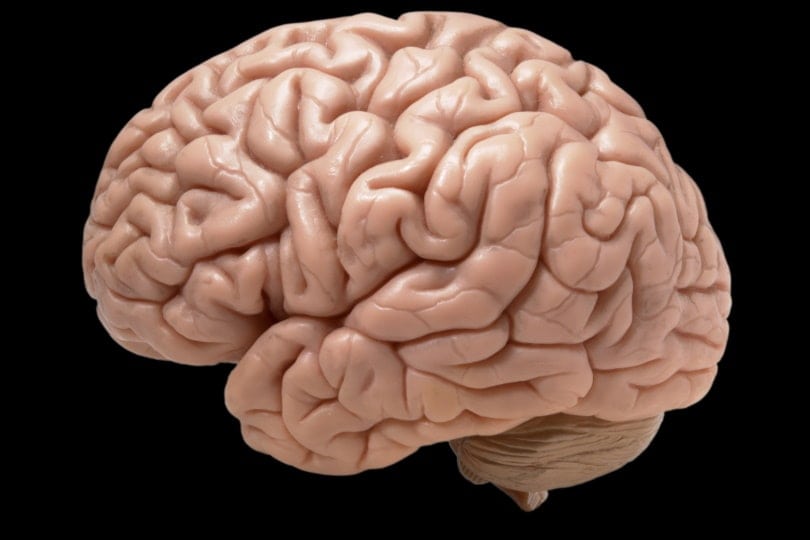
Memory
Memory is another area where cats and humans differ. A human brain can retain long-term memories for years, even decades. This allows humans to recall events, family members, and friends well into their golden years. When it comes to short-term memory in humans, you may notice that it only lasts for 18 to 30 seconds. This is because short-term memory only stores a small bit of information while long-term storage can be immeasurable.
Learning Ability
The human brain is designed to help us learn and function from the time we are born. As children, we are taught important information our long-term memories latch onto. This information stays and grows with us throughout the years. Humans also study others, just like cats. We watch our parents, other people, and even use tools like books to help us advance our intelligence and improve our learning ability.
Emotions
Emotions are a driving force in humans. Our brains help us experience fear, sadness, love, happiness, and a long list of other emotions throughout our lifetimes. A cat’s brain allows it to feel emotions as well, but not on the scale humans experience it. Our emotions are a central force in our lives and often drive us to make the decisions we do.
Conclusion
As you can see, the cat and human brain share many similarities. They are designed and function in the same aspect but also display several differences. While humans are considered the more intelligent of the two species, it is clear that enough credit has not been given to the intelligence of our feline friends. Cats aren’t simply curious, they are also quite intelligent.
Related Read:
- 12 Best Cat Toys to Entertain Your Kitty- Reviews & Top Picks
- How to Train a Cat: 6 Easy Tricks & Tips
Featured Image Credit: Left: Cat Brain: Espresso Buzz, Shutterstock | Right: Human Brain: Daniel Heighton, Shutterstock




